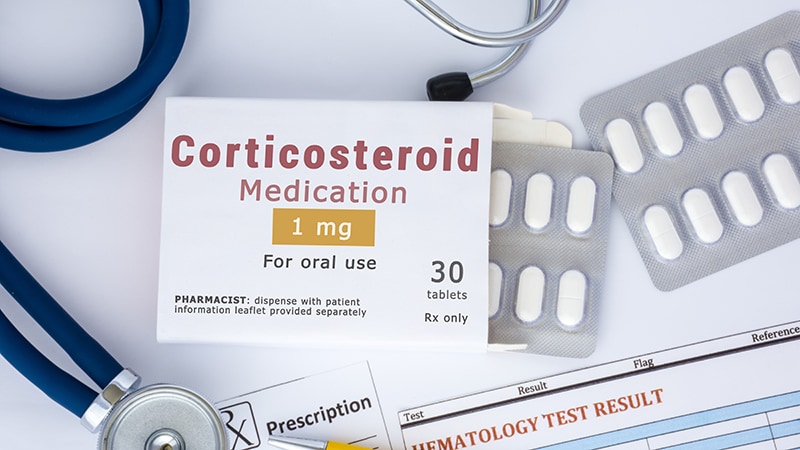TOPLINE:
Short-course systemic corticosteroids in children and adolescents are associated with increased risk for hyperglycemia and sleep problems, with moderate certainty evidence showing 38 more cases of hyperglycemia and 15 more sleep disturbances per 1000 patients. These adverse events (AEs) were rarely serious.
METHODOLOGY:Researchers conducted a systematic review and meta-analysis of 45 eligible randomized clinical trials involving 6470 children with a mean age of 5.57 years (SD, 3.62), of whom 3753 (58%) were men.Analysis included trials evaluating AEs after use of short-course (≤ 14 days) systemic corticosteroids in children aged 1 year to younger than 18 years across different clinical conditions.Primary outcomes encompassed serious AEs, AEs leading to discontinuation, hyperglycemia, sleep disturbances, change in behavior, and gastrointestinal bleeding.Risk differences (RDs) were reported as AEs per 1000 patients with 95% CI, and evidence quality was assessed using the Grading of Recommendations Assessment, Development and Evaluation approach.TAKEAWAY:Moderate-certainty evidence showed corticosteroids were associated with increased risk for hyperglycemia (RD, 38 more AEs per 1000 patients; 95% CI, 11-64 more AEs per 1000 patients) and sleep problems (RD, 15 more AEs per 1000 patients; 95% CI, 1-28 more AEs per 1000 patients).Low-certainty evidence indicated corticosteroids were associated with increased risk for gastrointestinal bleeding (RD, 13 more AEs per 1000 patients; 95% CI, 3-23 more AEs per 1000 patients).Corticosteroids showed no association with serious AEs (RD, 1 fewer AE per 1000 patients; 95% CI, 9 fewer to 7 more AEs per 1000 patients) or AEs leading to discontinuation (RD, 4 more AEs per 1000 patients; 95% CI, 3 fewer to 11 more AEs per 1000 patients).No significant association was found between corticosteroids and change in behavior (RD, 8 more AEs per 1000 patients; 95% CI, 5 fewer to 21 more AEs per 1000 patients).IN PRACTICE:
“Our research shows that corticosteroids — even when prescribed for a short period of time — were not harmless but rather were associated with an increased risk of AEs, including gastrointestinal bleeding, sleep disturbance, and hyperglycemia. The magnitude of the association was, however, small — < 4% for hyperglycemia and < 1.5% for the other outcomes,” the authors of the study wrote.
SOURCE:
This study was led by Joao Pedro Lima, MD, Department of Health Research Methods, Evidence, and Impact, McMaster University in Hamilton, Ontario, Canada. It was published online on September 30 in JAMA Network Open.
LIMITATIONS:
AE reporting was not a primary focus of the included studies, with authors rarely reporting definitions or methods used to capture them. Gastrointestinal bleeding events were not reported separately for upper and lower events, preventing subgroup analysis based on anatomical site. Additionally, underreporting of AEs was likely, potentially contributing to underestimation of harm.
DISCLOSURES:
No relevant conflicts of interest were reported by the authors.
This article was created using several editorial tools, including AI, as part of the process. Human editors reviewed this content before publication.

